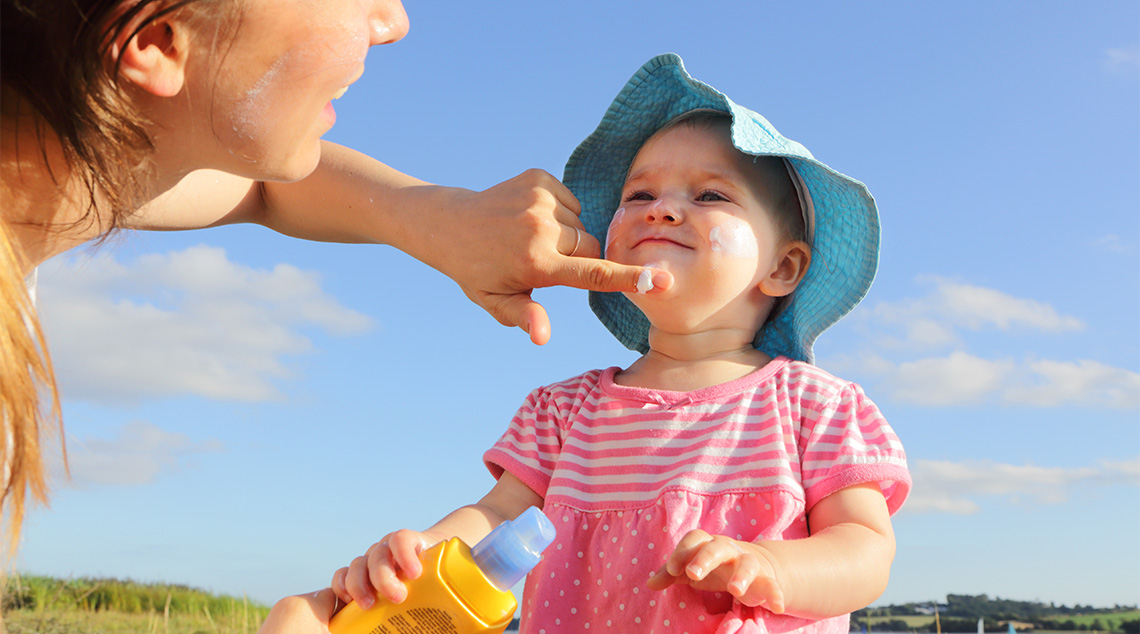Is the sun safety message being lost on Aussies?
Summer is here, and that means fun outdoors, but experts say sun damage is still effecting too many Australians – particularly young people.
It’s set to be a sizzling summer, which means hitting the beach, enjoying time outdoors, and remembering to slip, slop, slap.
Skin cancer rates are climbing with two in three Australians now developing some form of skin cancer before they’re 70.
Sun damage can also accelerate ageing, so follow these tips and stay sun smart these holidays.
What are the different types of skin cancer?
Chair of the Cancer Council’s National Skin Cancer Committee Professor Anne Cust says Australia is the melanoma capital of the world, with more than 18,000 people developing the deadly skin cancer each year.
Despite repeated warnings, the Council says 2000 people die each year from skin cancer.
Basal cell and squamous cell carcinomas are the most prolific skin cancers, but most are not considered life-threatening.
“Skin cancer is now the most common cancer in people aged 20-39,” Prof Cust says.
“This group hasn’t grown up with the slip, slop, slap slogan that my generation did (slip on a shirt, slop on sunscreen, slap on a hat).
“And like any prevention messaging, it’s easy to fall back into bad habits.”
When do we need to cover up?
It’s a common misconception that we only need sun protection when it’s sunny, president of The Australasian College of Dermatologists Dr Adriene Lee says.
Rather, it’s important to cover up and apply sunscreen whenever the UV Index is 3 or above, even when skies are grey.
“People still think if it’s not sunny they’ll be OK, but it’s more about factors such as the time of day and time of year,” she says.
Check the UV index on your weather app or the SunSmart Global UV app.
Where should we get our skin checked?
The first port of call for most people is the GP, Prof Cust says.
“Everyone needs to be aware of their skin and look for changes in existing moles or any new moles or spots that appear,” she says.
“Anything that’s changing, itchy, bleeding or painful in any way should definitely get checked out by a doctor.”
Dr Lee says people vulnerable to skin cancer should have annual checks with their dermatologist, or six-monthly checks if they are worried.
People with blonde or red hair and lots of freckles, pale skin with previous sunburns, lots of moles, or a personal history or family history of skin cancer are considered high-risk.
What sunscreen should we be using?
Prof Cust says water-resistant SPF 30 (or higher) broad-spectrum sunscreen offers the best protection and needs to be applied regularly when outdoors or swimming.
“Sunscreen shouldn’t be the only line of defence; it’s important to wear a wide-brimmed hat, sunglasses, long sleeves where possible, and find shade,” she says.
Broad spectrum sunscreen protects against both UVA and UVB, which pose differing levels of melanoma risk.
UVA is the biggest culprit for photoageing.
How does sun damage in our youth manifest in later life?
Premature ageing such as pigmentation, sunspots and wrinkles are all signs of too much sun exposure – and the damage may have been caused decades earlier.
“A lot of people spend a fortune on anti-ageing treatments and creams, but if they had protected themselves from an early age, they might not need it,” Dr Lee says.
“Sun damage starts to build up from the time we are toddlers, so we have to be vigilant all our lives.”
More on sun damage:
- The other skin cancer: What is basal cell carcinoma?
- How to banish sunspots from your face
- How to protect your hair from sun damage
- Be sun smart with these seven simple tips
Written by Elissa Doherty.





